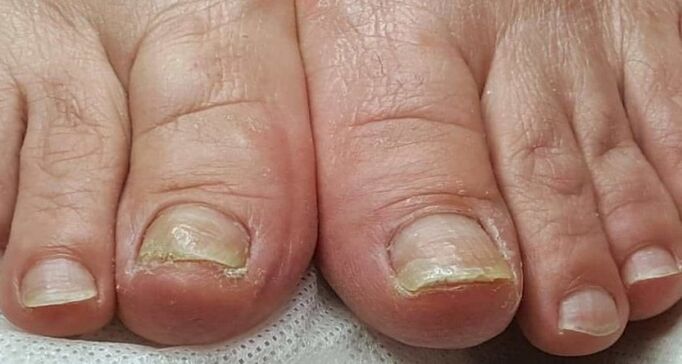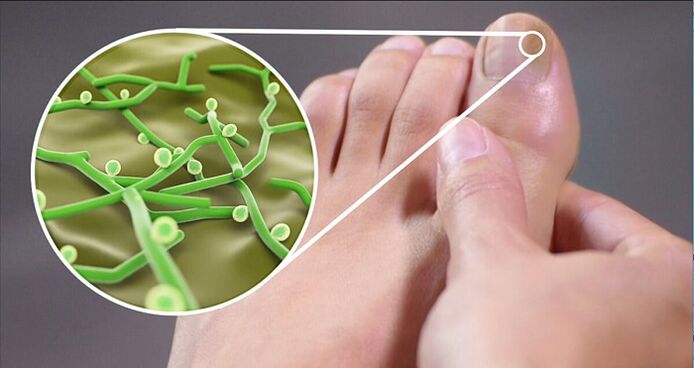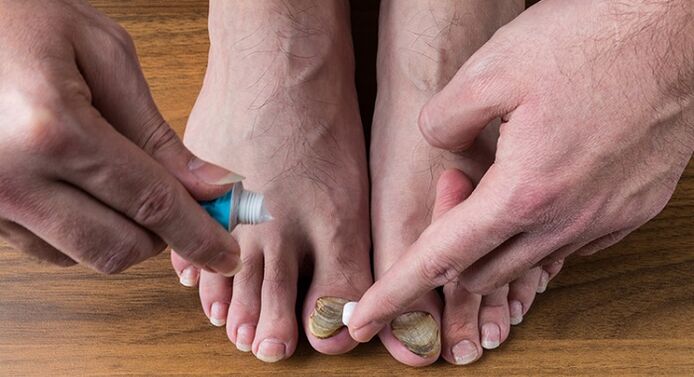Despite the prevalence of this infection, few people know what skin fungus on the legs looks like. Out of ignorance, many people mistake fungal infections for common irritation or allergic reactions, so they start treatment in the late stages of disease progression. According to statistics, fungal infections are resilient and account for 20% of the total population susceptible.
What is a fungal infection like?
Fungi are infectious diseases that affect the skin (mainly feet). There are several types of the disease, but the most common is mycosis. The fungus is resilient and it can adapt to almost any condition. Even if a person gets rid of the disease, since the spores of the fungus still live in clothes and shoes, recurrence is usually inevitable. In most cases, mycosis affects the nail plate and the skin of the feet.
Few people know what foot fungus looks like. There are several types of fungi, each with its own symptoms and manifestations:
- The initial manifestation of the fungus is redness, swelling and microcracks of the skin.
- The fungus continued to grow, and the skin peeled off and was covered with red-pink spots.
- If the disease is not properly treated, the fungal infection can spread to the nail plate, changing its color, shape, and structure.
The last stage is characterized by skin shedding and deep cracks that cause pain and bleeding. At all stages of development, the fungus on the toes manifests as itching, which is usually unbearable. To accurately represent the appearance of the disease, just look at the pictures on this subject.

The process of fungal infection
This fungus affects people regardless of their age and professional activities. Infection can easily spread from an infected person to a healthy person (especially when wearing other people's shoes). You can also catch the virus in public places (such as baths, saunas, and swimming pools). After the fungus enters the skin, it gradually moves throughout the body and gradually destroys the nail plate. This is why the advanced stage of the disease is only suitable for complex treatments (creams, ointments, drops and tablets).
People at risk of contracting fungal infections include the following types of people:
- Employees of enterprises who participate in public showers after shifts;
- People who specialize in sports;
- Military personnel (mainly sailors);
- Utility workers
- miner.
Fungal infections usually affect housewives and people whose professional duties are directly related to water.

Dermatophytes: diagnosis and treatment
After knowing what the skin fungus looks like on your legs, you can immediately identify the disease. But in this case, self-medication is not appropriate, because the type of pathogen and its form must be determined initially. This can only be done in medical institutions. If a person suspects that he has skin fungus due to external symptoms, he urgently needs to consult a dermatologist.
The specialist must conduct a preliminary examination of the patient and perform the necessary examinations (complete blood count, microscopic examination). If the diagnosis is confirmed, the necessary treatment is prescribed for the patient. These can be creams, topical ointments and oral tablets. Only the doctor decides how to treat the disease, and it is not recommended to prescribe antifungal drugs by yourself.

Folk remedies
In the early stages of disease development or in addition to drug treatment, traditional medicine is perfect. There are several ways to get rid of foot fungus. In order to cure the fungus on the skin, it is recommended to prepare a or chamomile flower tincture. For this, you need 2 tablespoons. l Herbs, pour 200 ml of boiling water. The must agent must be cooled and poured into a basin, where the calf should stand for 15-20 minutes. After that, wipe the feet thoroughly with a paper towel and apply birch tar, paying particular attention to the infected skin. This process must be repeated every day until the symptoms of the disease have completely disappeared.
If the nail plate is affected by fungus, the treatment time will be longer. In traditional medicine, iodine and 9% vinegar are most commonly used. The liquid must be mixed in equal proportions, and the nail on the affected area must be lubricated with the medicine produced. In this case, it is recommended to saw off the nail plate as much as possible.
In some cases, folk remedies are very effective. However, when fungal infections have penetrated into the blood, it is not recommended to use them in the late stages of the disease. In this case, it is best to seek help from experts, who can advise not only competent personnel, but also safe treatment methods.
Skin fungi do not cause major damage to human health, but they usually cause discomfort because the affected areas of the skin and nails do not look very attractive. The existence of this disease prevents people from entering public places (swimming pools, saunas, water parks), despite the fact that such infections are common in these institutions. As a precaution, you must comply with personal hygiene rules and monitor your health.

























